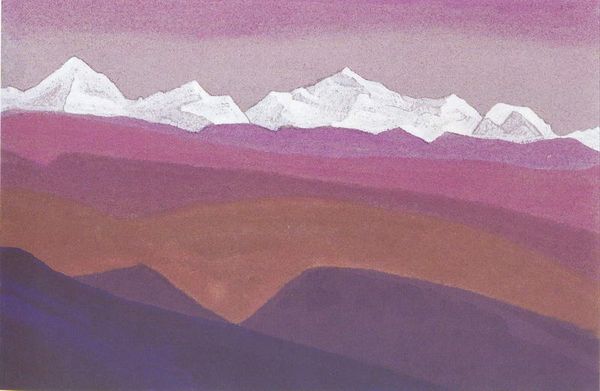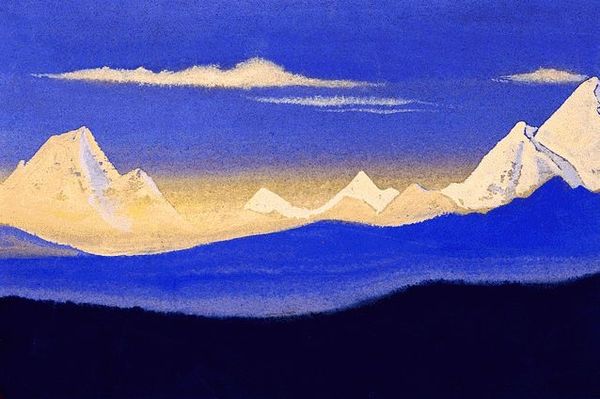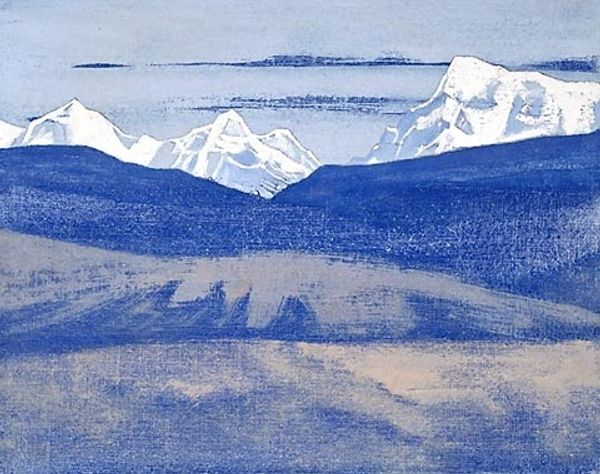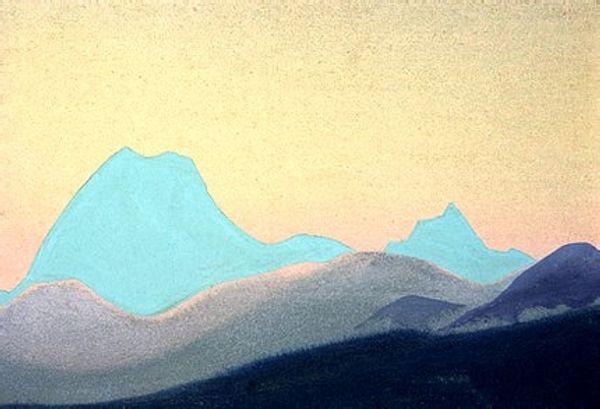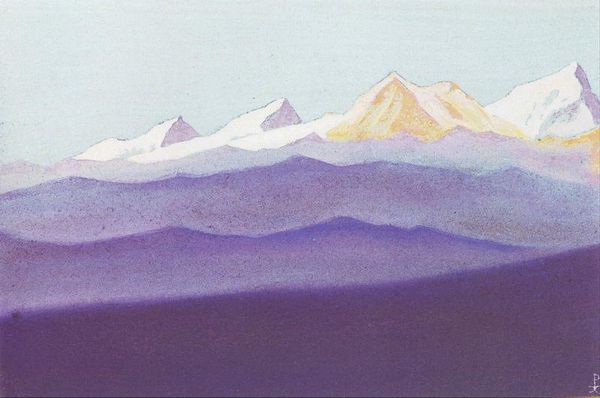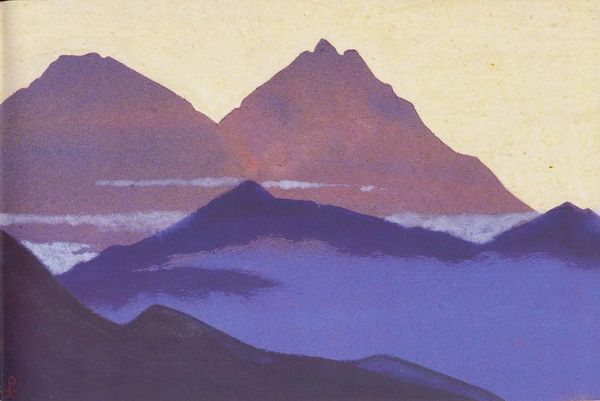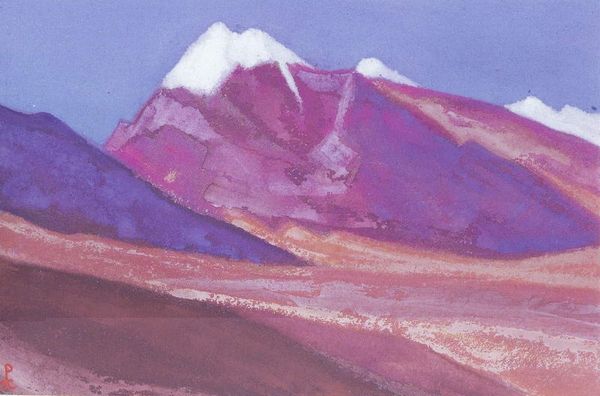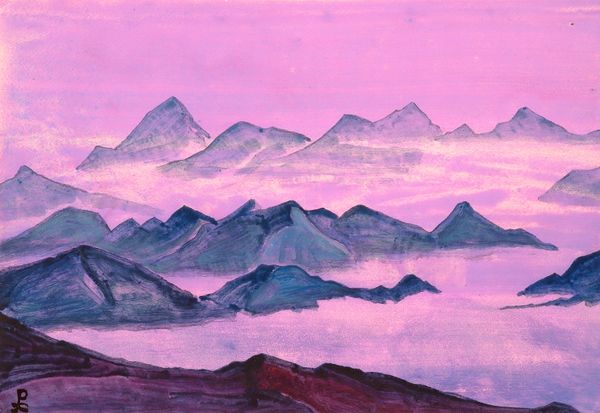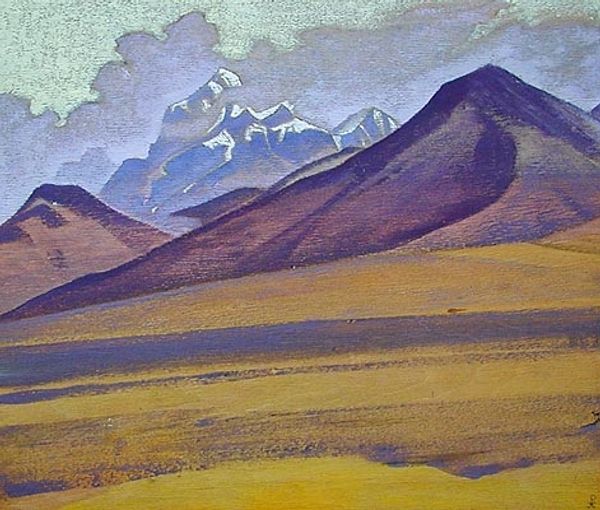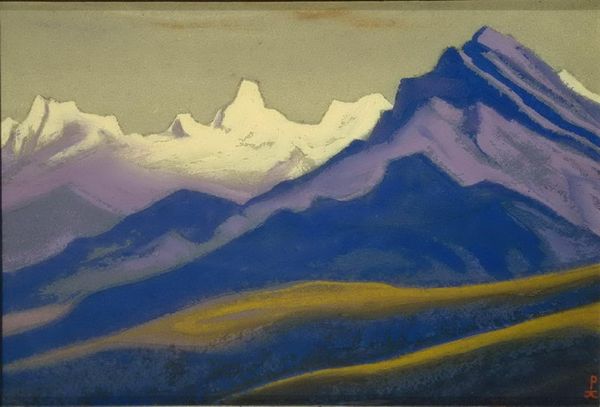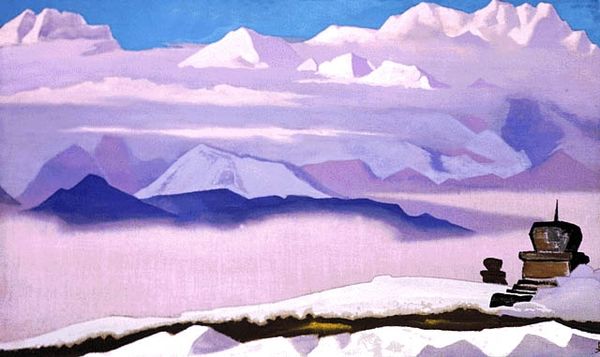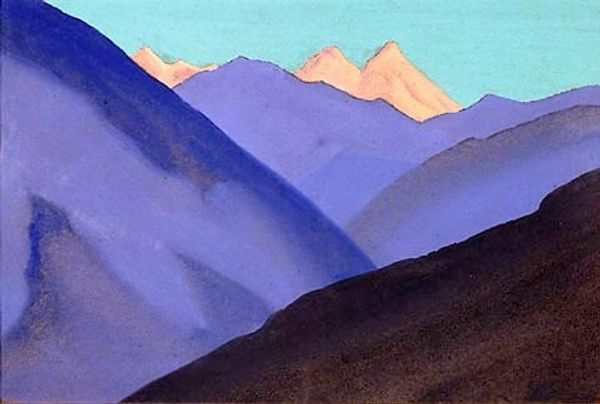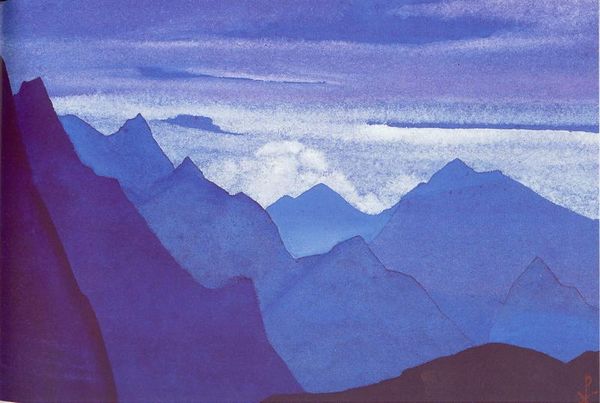
Dimensions: 21 x 27 cm
Copyright: Public domain
Curator: Today we're looking at Nicholas Roerich's "Pass Tangla" from 1927, an oil painting currently held in a private collection. Editor: This piece evokes a feeling of serenity and immense space. The color palette is somewhat muted, yet striking. What structural elements do you find most compelling in this landscape? Curator: Note how the composition uses a clear layering. The lower ground is set against the central mass of undulating, rounded hills which directs the eye to the angular mountain peaks and, lastly, the expansiveness of the sky. Editor: How does Roerich manipulate the oil paint medium to enhance these formal qualities? Curator: Consider the texture; areas of visible brushstrokes and perhaps even the impasto in the lower foreground draw us into the materiality of the painted surface itself. Also consider how the application of the oil suggests that it may have been created en plein-air, giving it a sort of authenticity and adding value. Editor: The color relationships are really subtle; does that inform any part of your interpretation? Curator: Observe how the subdued color palette actually strengthens the compositional structure. The dominance of yellow creates a visual screen against which the cool blues and violets provide a sense of depth without relying on sharp contrast. The strategic distribution of light guides the viewer's eyes in a clear route, establishing depth in the image and reinforcing its structural unity. Editor: That's a great breakdown! The painting’s layers and color relationships really do create a powerful effect. Curator: Indeed. Through careful examination, we can truly appreciate how this work's aesthetic impact is constructed by compositional techniques.
Comments
No comments
Be the first to comment and join the conversation on the ultimate creative platform.
